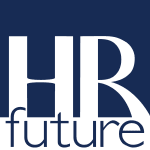It’s often stated that people make up the most crucial element in any business. They can effectively make up for whatever other resources your company lacks. When you have the right employees who are motivated to work and passionate about their roles, it’s said that your organization will drive forward to success. Having said that, it makes total sense to structure the most competent human resources (HR) department in your organization to ensure that your employees are well taken care of.
The HR team is responsible for many roles, such as recruiting the best talents for your organization, launching training, handling promotions and salary increases, and managing employee issues. There are many other responsibilities on their plate, and they can’t afford to make mistakes, so there won’t be negative impacts on the organization.
Whether you’re a business owner or an HR Manager, human resource planning plays an essential part in avoiding costly mistakes.
Here are some HR mistakes that you should keep an eye on:
Lacking Job Training
To grow within your company, personnel will likely need some form of professional development. Businesses have the responsibility to provide these training opportunities for their own employees. After all, the benefits will also be shared with the company as their staff becomes more reliant and skilled. The HR department should note what kinds of training and skills development are needed for the employees in the company.
Whether it’s related to software, use of apps, tech tools, or developing leadership, communication, or other soft skills, your HR must give these training opportunities to whoever is qualified. Businesses often fall into bad human resource practices because of a lack of job training.
As part of the onboarding process, you start training your new employees. This sets the right expectations and prevents future problems. However, some companies fail to train their rookies well, and even if they did, training sometimes turns non-effective as workers become tenured.
Lack of training can be dangerous as your competitors become more equipped with updated talents and skills you otherwise might have overlooked. It’s also a common HR mistake for small businesses to promote employees without providing adequate people management training. This employee can’t just be thrown into a leadership position. Therefore, ensure that they acquire appropriate training before tackling the new job role.
Outdated Employee Handbook
It would be impossible for employees to know what rules to follow unless a current and updated handbook is available. This serves as the ultimate guide for the dos and dont’s in the company. It’s believed that personnel who lack updated employee handbooks often violate the law and sue their employers.
Employee handbooks aren’t required by law, but they’re considered a best practice to ensure that all laws, regulations, policies, and company information are shared consistently among all employees. These manuals should be updated annually or at least once in two years.
The handbook can provide examples of situations so the HR team can know how to tackle similar concerns with the employees. Ensure that everyone has access to the handbook. They don’t have to be in print; you can simply email an electronic copy to the employee during their onboarding period. Require them to read it and be familiar with the company’s rules and regulations before starting their work.
The handbook must apply to all employee levels, so even the upper positions must be aware of their role limitations. When it comes to interviewing, hiring, terminating, and daily management, managers need to be mindful of their legal limits.
Ignoring Workers’ Issues And Concerns
Another common mistake from HR is ignoring the employees’ concerns and issues. If problems are ignored, the company may face more serious and pressing matters, including tensions among employees, a higher turnover rate, hostility, and low engagement. The overall productivity and teamwork will be affected too.
An employee’s issue can be resolved if HR sympathizes with them and takes concrete action. Human resources can solve employee problems by showing they care. Take immediate action so the issue won’t scale up. Explain how you plan to resolve the problem and show empathy for the employee. These small actions can make the employee feel calmer and at ease.
Faulty Onboarding Processes
Another HR mistake is when there are faulty onboarding processes for newbies in your company. A new employee should get familiar with your organization, your buildings and equipment, the departments they’ll work in, their direct superiors, and the teams of people they will work with daily. You can’t leave a rookie to learn the ropes of their new job by themselves. Provide them with the right tools to appropriate tools to make efficient onboarding possible.
Ensure that you assign them someone who can show the work and facilities around. Invite them to important meetings, and introduce the key people they need to interact with. Make use of the right strategies to make them feel welcomed and comfortable in the office as soon as they start working on site.
Onboarding in high-performing organizations is aligned with strategic activities that help employees integrate into the culture and improve company performance. Your organization can explore and decide to apply mentoring, training assessment, or meeting with investors and stakeholders for new employees to get to know the company better.
Vague Salary Increase Plan
The HR department should devise a salary increase plan from the very beginning. It may become an expectation for your employees if they notice a trend in salary increases. Establish the key performance indicators (KPIs) and requirements for such circumstances.
Whether it’s based on tenure, performance, or company situation, you must be transparent in explaining how salaries are computed and what basis will result in an increase. Also, you should establish salary caps for each position and identify both qualitative and quantitative measures that can make their salary increase.
Selecting The Wrong Personnel
Hiring the wrong people in your company is a colossal disaster and will only yield bad outcomes. Employing poor performers is believed to reduce productivity, waste organization resources, increase training time, and compromise the quality of their work. Some HR departments can land bad candidates due to poor judgment of people or applicants.
To decrease the risk of this occurring, managers, HR leaders, and critical staff can conduct interviews, assess resumes, and meet together to evaluate the applicant. It’d be best to carefully decide which candidate to hire after several interviews or assessments are performed. Remember to prioritize skills over resumes when hiring.
Unsecured Employment And HR Data
Data breaches pose a significant threat to companies, which can happen to the HR department. After all, employment data are stored here and can be hacked possibly. Companies are most likely to experience a malicious breach because of stolen or compromised employee passwords and accounts, which are accessed with previously exposed emails. Thus, ensure employees are trained on how to ensure data security and how frequently passwords must be updated to reduce the risk of an attack.
Conclusion
Keeping the mistakes listed above out of your HR strategy will help you set yourself up for success and build a more robust HR strategy. It’s crucial to avoid the problem before it scales bigger and makes it harder to solve. The HR department is one of your organization’s most critical business structures, so ensure that the best practices are applied.
Keith Brown is a New York-based multi-awarded HR Practitioner of more than ten years. He has been sharing his valuable professional insights regarding sound HR management practices via online blogs and other forms of web media.













